Reviews
George A. Romero
USA, 1968
Credits
Review by Daniel Loria
Posted on 15 October 2011
Source Netflix Watch Instantly
Categories 31 Days of Horror VIII
When ten friends from a small Pittsburgh TV advertising agency pitched in $600 each to produce an independent film, they had no idea that it would turn into this. It was 1968 and the American film industry - along with society itself - was tearing at the seams. Hollywood wasn’t an option for them, at least not back then, as the crumbling studio system was still closed to outsiders who hadn’t paid their dues. Instead, the group decided to stay in Pittsburgh and make a genre picture that would get picked up for distribution on the cheap before moving on to bigger, better projects. But those projects never came. The “little” film they made took a life of its own and defined their careers. Over fifty years after its original release, Night of the Living Dead is still scary and influential enough to stand the test of time.
Night of the Living Dead has been around for so long and been the subject of so many different interpretations that it’s almost tiresome to read a new one. With that in mind, I’m not going to bore you by rehashing another discussion of how the film is a timely and/or timeless critique on society, politics, racial issues or whatever-the-fuck-else you want to impose on it. None of us who saw this film for the first time approached it for these reasons. We watched Night of the Living Dead because of one simple fact: because a movie titled Night of the Living Dead sounds like it’s going to scare the crap out of us. It’s as clean and efficient as high concepts get—a reflection of the bare-bones, no bullshit filmmaking that has allowed it to endure all these years.
The corny exposition goes straight to the point: two siblings drive to a cemetery; cemeteries are scary. A weird old man starts walking slowly toward the siblings; weird old men who walk slowly are scary. The old man isn’t an old man at all, but a man who came back from the dead and now one of the siblings is dead; everything about this is scary. The terrifying message loud and clear: the dead can walk and they want to eat you. That’s all you need to know. That half-assed explanation they mention later in the film, that it was caused by some sort of space radiation? Superfluous. And you know why it doesn’t matter? Because dead people want to eat you alive and there is no solution. As soon as the viewer suspends their disbelief and taps into the pure horror of this realization, then (and only then) does the film start working with maximum effect.
The remaining sibling, Barbra, is able to find refuge from the onslaught of zombies in a small rural home. A band of survivors gathers in the small country home, a setting that reframes the conventional house of horrors in an entirely new context: the house isn’t haunted, the world is. Part of what makes this film work so well is the suffocating sense of claustrophobia the house brings. But unlike, say, a film such as Psycho, the feeling of terror we get from the home doesn’t come from the secrets within, but from its pathetic vulnerability to the world outside. Instead, the house recalls another Hitchcock film, The Birds, where we share a fleeting sense of false-security on a dilapidated haven that struggles to provide any sort of refuge from the persistent threat of invasion.
After a botched escape plan results in two deaths and the loss of their sole method of transportation, the survivors naively board up the house as though preparing for a hurricane. It’s a useless gesture. Reality has disintegrated entirely and the characters begin to crack under their own futility in front of an implausible situation. Arguments begin to erupt and grow increasingly violent as the refugees barricade themselves inside the house. Yet, the only real difference in this world is that death no longer looms invisibly beneath them. The pain, grief and discomfort death brings is fully exposed in a vulgar spectacle. Eating, one of the basic needs of survival, is depicted as an abject and transgressive action. This is horror in its purest, most primal sense. Any spiritual preconception of a peaceful afterlife is absolutely subverted and transformed into a grizzly, mindless nightmare. The living dead totally lack reason: they can walk, they can eat, but they can’t think. This crisis of rationality brings out the film’s surreal qualities: the absence of a moral order, the eerie silence of post-apocalyptic boredom, the intimidating power of liberty that only anarchy and chaos of bring. This is Buñuel territory, perhaps best exemplified in The Exterminating Angel, where a high-society dinner party takes a bizarre turn after the guests find themselves unable to leave their host’s living room for months. The only thing director George A. Romero does to the formula, inadvertently or not, is take out the class element in Buñuel’s film and replace it with flesh-eating zombies.
Perhaps another of the reasons why this film has aged so well is precisely because it looks like it was made by ten guys from Pittsburgh on a shoestring budget. Night of the Living Dead is blue-collar cinema. It has a grimy and unkempt feel that it proudly displays like a chip on its shoulder. There are no manicured frights, no stylized violence, or polished, glossy stars to distract oneself with. The movie looks dirty and cheap because it is dirty and cheap.
Night of the Living Dead stands apart on a narrative level as well. There really isn’t a protagonist in the film. Barbra, whom carries the story from the beginning, is discarded early into the third act. Ben, the African-American leader of the group, isn’t developed well enough to create a close relationship with the audience. Even Karen, the young daughter of two other survivors, defies all odds by turning into a zombie and brutally murdering her mother on-screen. And when the sun rises, and the sole survivor - a glowing example of human perseverance - makes his way out to the daylight, he is shot immediately by two police officers surveying the scene, almost as an afterthought. Viewers leave the diegesis with the same feelings of confusion and discomfort they came in with. There is no happy ending—that is, if you can even call it an ending. There are no survivors. There are only dead people. Dead people who can walk and want to eat you alive and there is no solution.
More 31 Days of Horror VIII
-
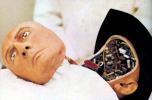
Westworld
1973 -
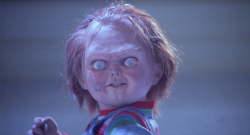
Child’s Play
1988 -
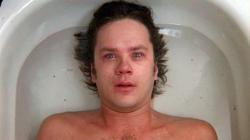
Jacob’s Ladder
1990 -
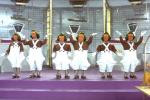
Willy Wonka and the Chocolate Factory
1971 -
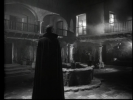
El Vampiro
1957 -
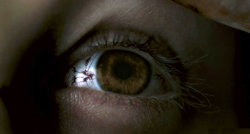
28 Weeks Later
2007 -

Piranha II: The Spawning
1981 -
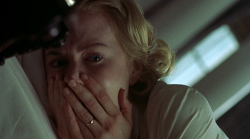
The Others
2001 -
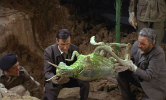
Quatermass and the Pit
1967 -

I Know Who Killed Me
2007 -
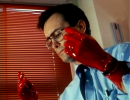
Bride of Re-Animator
1990 -
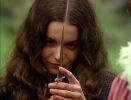
Alucarda
1978 -
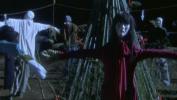
Kakashi
2001 -

Seizure
1974 -
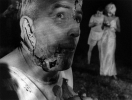
Night of the Living Dead
1968 -
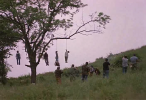
Night of the Living Dead
1990 -
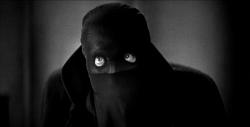
The Bat Whispers
1930 -

Miracle Mile
1988 -

Tintorera
1977 -

Paradise Lost
1996 -

The Cars that Ate Paris
1974 -

Ginger Snaps
2000 -
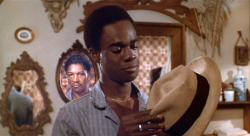
J.D.’s Revenge
1976 -
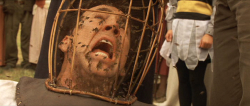
The Wicker Man
2006 -

Black Water
2007 -

Don’t Panic
1988 -
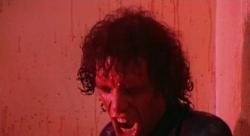
The Driller Killer
1979 -

Targets
1968 -

Mahal
1949 -
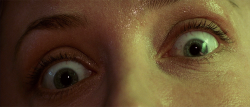
Event Horizon
1997
We don’t do comments anymore, but you may contact us here or find us on Twitter or Facebook.



